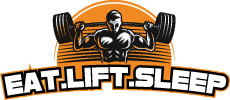High-intensity interval training has rightfully occupied its position as a fitness game-changer. It has been the talk of the town for its extraordinary results in a small amount of time. Even researchers have done numerous studies to showcase the life-changing impact it has on your body.
How many times a week should I do HIIT? Most people should look to do two to three sessions a week. You need to have at least 24 hours between sessions to ensure you are healthy and healed before your next HIIT workout. HIIT is very taxing on your body as you push it to 90% of maximum in most workouts.
It’s a formula that doesn’t allow your body to get accustomed to the same set of exercises. The results of high-intensity interval training (HIIT) come from focusing on your speed rather than your technique.
HIIT workouts enable you to keep achieving your ultimate training zone, again and again, surprising your body after each workout.
However, you can only attain your desired results when you know how long should a HIIT workout be. Too little won’t give you the full potential of the exercises, and too much of anything can never be a good thing.
New research has also highlighted the fact that amplifying the volume doesn’t necessarily produce better effects.
The amplified stress of high-intensity interval training produces a positive impact on your body. However, your body can only withstand a limited amount of pressure.
According to Jinger Gottschall, Associate Professor at Pennsylvania State University, HIIT workouts produce a hormone called cortisol, which is beneficial for your body. Still, too much HIIT exercises for an extended period can jeopardize this effect.
Then, what is the right dose of HIIT workouts? Keep reading, and you’ll find the answer to this mind-boggling question!

What is High-intensity Interval Training?
High-intensity interval training is one of the most time-efficient methods of exercising. It involves small bursts of intense workout, seesawed with low intensity of recovery intervals.
Generally, HIIT workouts range from 10 to 30 minutes. However, these exercises can produce much more impact than other moderate workouts within this time.
According to Joey Thurman, certified personal trainer and author of “365 Health and Fitness Hacks That Could Save Your Life, ” the idea behind HIIT is to elevate your heartbeat for a short period, followed by a period of recovery or relaxation. You can exercise in a 1:1 work to rest ratio, I.e., sprinting for 30 seconds and relaxing for the next 30 seconds.
If you are a beginner, you can also go for a 1:3 ratio, i.e., sprinting for 30 seconds and relaxing for 1.5 minutes. Don’t worry if your exercising time is less than your relaxation period. All you need to do is give your maximum effort during the sprinting time.
Authentic HIIT workouts should make you feel like you have reached your limits. Your body should feel as if it has reached the end of its threshold. That’s the entire idea behind high-intensity interval training.
This essentially suggests that if you can get out of your bed and do a round of HIIT every day, then you aren’t doing it the right way. It’s hard and uncomfortable to push yourself regularly, especially when you need to achieve it mentally as well as physically.
However, if you manage to reach your limit, your mirror will show the results!

The Benefits of HIIT
Who doesn’t want a more efficient and time-saving method of losing weight? The idea of losing weight fast and with less workout time sounds refreshing and motivating. This is exactly why HIIT is gaining so much popularity. But, does it genuinely have a positive impact on your body?
HIIT Burns a Lot of Calories
HIIT workouts burn more calories than any other moderate exercise in the same amount of time. This fact is scientifically approved too.
A study was held to compare the calories burnt in 30 minutes of high-intensity interval training, running, weight training, and biking. Researchers found out that HIIT burned about 25-30% more calories than the other form of workouts.
In this research, individuals went for a 1:2 ratio, i.e., sprinting for 20 seconds and relaxing for 40 seconds. This would mean that the participants only exercised for about 1/3rd of the time.
Therefore, it also shows that you can achieve more from HIIT workouts in a shorter period. HIIT allows you to burn a lot more calories than the other exercises, even when you spend less time in your workouts.
HIIT Increases Your Metabolism Rate
High-intensity interval workouts are one of the best training for weight loss because it burns calories even after you complete your workout routine. A study illustrates that HIIT can successfully increase your metabolism rate for hours after your workout.
According to research conducted by PubMed, researchers found that HIIT workouts increase your metabolism more than jogging and weight lifting. They also found that HIIT efficiently compels your body to burn more fat rather than carbs, making you lose weight faster.
Another study conducted by PubMed illustrates that sprinting for two minutes in the form of HIIT increases your metabolism even more than the regular 30 minutes of running. And, the most shocking part of this study was that the results came within 24 hours.
HIIT Helps You Lose fat
As mentioned earlier, high-intensity interval training compels your body to use more fat instead of carbs. You are probably aware of how hard it is to burn fat when it is always focused on storing it.
Your body can hold fat up to an indefinite period. Carbohydrates get converted into glucose, which fuels your metabolism. However, a human body sends all the fats to their adipose tissue, where it stays for a long time. Your body doesn’t use it until you externally force it to do so.
The quickest way to compel your body to use all the pent-up fat is by high-intensity interval training. A study was conducted where the participants were overweight young men.
They did HIIT workouts for 12 weeks. Researchers found that the reduction of fat mass was by 4.4 pounds. They also recorded a 17% decrease in their belly fat.
In this study, researchers also recorded that the level of visceral fat mass received a significant reduction. Visceral fat mass is the fat that surrounds your internal organs, promoting various deadly diseases.
HIIT Improves Your Oxygen Consumption
Your muscles’ ability to consume oxygen defines your oxygen consumption. Athletes often perform endurance training to improve and strengthen their oxygen consumption.
Traditionally, athletes continuously run or cycle for long periods to increase their oxygen consumption. However, studies show that HIIT workouts can give you the same benefits in less amount of time.
A study conducted by PubMed illustrated that 20 minutes of HIIT workouts increased oxygen consumption by 9%. In this study, there was another group who found the same results after 40 minutes of cycling for four days per week.
The duration of HIIT was only for about 60 minutes per week, whereas the traditional cycling workout gave the same results after 120 minutes per week. Therefore, you can see that HIIT gives you the same result, with half the exercising time.
HIIT Reduces Your Blood Pressure
One of the most common problems faced by obese individuals are issues related to their blood pressure. Research shows that high-intensity training helps in reducing your heartbeat as well as your blood pressure.
PubMed organized research where a traditional endurance training group exercised for about 30 minutes per day. They continued to do this for four days per week.
Another group, referred to as the HIIT group, exercised only for 20 minutes per day. They only exercised for three days in a week. This research showed that HIIT managed to attain the same level of blood pressure improvement as traditional endurance training.
However, the HIIT group managed to achieve it in a much less period, with a lot less exercising duration. High-intensity workouts are best for overweight individuals as they can get rid of high blood pressure in a limited time.
HIIT Reduces Your Blood Sugar
Different researchers found that regular HIIT workouts can reduce your blood sugar and improve your insulin resistance. Studies show that you can see a significant decrease in your blood sugar in about 12 weeks, or even less than that.
If you are suffering from diseases like diabetes type 2, high-intensity interval training is the best workout for you. According to a study conducted by PubMed, researchers agreed that HIIT workouts are very efficient in curtailing the level of blood sugar in type 2 diabetic patients.
Another research conducted by PubMed illustrated that HIIT workouts improved insulin levels in average weight individuals too. These studies even showed that the results achieved by HIIT were higher than the traditional exercises.
Thus, there are a large number of benefits attached to the training program for HIIT. There are also various ways to get started, like running, jumping, biking, etc. You can select any activity you like to begin your journey of HIIT.
The Drawbacks of HIIT
There are very few things that do not have two sides. With all these good qualities, you must be wondering that it is beginning to sound too good to be true. And, just like two sides of every coin, HIIT also has another side.
Various researchers have highlighted the good points about high-intensity interval training. However, many have also pointed out the risks and drawbacks associated with this training regime.
HIIT Makes it Difficult for you to Maintain Your Proper Form
The idea behind high-intensity interval training is to push your limits by going as fast as you can. It doesn’t necessarily focus on technique, which can lead to various injuries.
HIIT workouts often include complicated exercises, like box jumps or burpees. These are the exercises that can seriously injure you if you don’t execute them correctly.
Now imagine doing them with the speed of HIIT. The wrong technique is harmful on its own, but combining it with speed will make it a perfect recipe for disaster.
To avoid this, you must focus on maintaining your form before you speed up the process. If you are a beginner, it is better to start under the guidance of a trainer.
HIIT Requires More Preparation Time
This is what those “five-minutes fat loss” articles don’t tell you. High-intensity interval training gives you amazing results quickly, but this training is not for newbies.
Before starting with HIIT, you must prepare yourself using low-intensity exercises. This preparation can go on for weeks, depending on how long it takes to achieve a proper form.
Even when you are ready to start your HIIT workouts, it will never take you only five minutes. HIIT requires dynamic stretching before your workout and after your workout. Yes, it’s not over even when it’s over.
Many fitness trainers suggest that static stretching won’t protect you from soreness, pain, and microtears in your muscle. Therefore, if you want to avoid any injury, you will have to invest your time in this lengthy preparation.
HIIT is not for Everyone
If you are someone who believes in “no pain, no gain, ” then HIIT is the best workout regime for you. However, if your style is to pass out in the gym after too much pain, then HIIT isn’t the one for you.
HIIT workouts are tough. There’s no easy way of doing this. It will test your limits, pushing you to sweat profusely. It can create a lot of discomfort and mental exhaustion.
According to Joey Thurman, mental burnout can happen quickly in high-intensity interval training. And, when that happens, your mind starts to lag. You will feel tired at the thought of your workout, which will lead to not being mentally invested in your fitness program.
HIIT workouts test your body, but your mind also goes through a lot of strain. If you begin to feel mentally exhausted, it’s a sign to step back and relax.
HIIT can Give you Anxiety
Who doesn’t love a good challenge? And HIIT offers you precisely that. It takes you into a fight or flight zone, where you can either give up or continue with every bit of your energy.
However, as you keep doing this, it will get harder for you to get out of that zone. Even in your relaxing period, you will be alert and nervous. This is why the frequency of your HIIT workouts are fundamental.
If you keep doing these workouts for an extended period, it can trigger various anxiety issues, like nervousness, jitters, racing heart, sweaty palms, and lack of focus. HIIT takes you to such an extreme that it can get difficult to climb down from that peak.
HIIT Isn’t as Effective as Low-Intensity Cardio
As mentioned above, the number of calories burnt in HIIT is much higher than that of any other traditional exercise. However, the low-intensity cardio lowers and relaxes your heartbeat more than HIIT.
This is why people with heart issues cannot do high-intensity interval training. In HIIT workouts, the oxygenated blood gets transformed so quickly that your heart doesn’t even get full before it starts pumping out.
In low-intensity cardio, your heart doesn’t go through this stress. During these workouts, the left ventricle of your heart gets full thoroughly before it contracts again. This has a positive impact on your body.
After regular practice of low-intensity cardio, your heart’s chambers begin to expand in capacity. It starts to pump more blood after each contraction. This process results in a lower heartbeat.
HIIT Workouts Are Too Physically Tough to Last
There’s only one thing that HIIT needs – every drop of your energy. It will make you drop on the floor, feeling too exhausted even to move a finger. These workouts put immense pressure on your body as well as your mind.
High-intensity interval training is beneficial and time-saving. However, the amount of effort it takes to go through each session is monstrous. This can create a sense of dread in the mind of beginners or even seasoned fitness enthusiasts.
If you want to find the best workout for weight loss, HIIT can help you. But, if you need something to maintain your weight, HIIT is a tough call. It is one of the hardest workout regimes to follow for an extended period.
With low-intensity workouts, your body gets used to it after a specific time. However, this does not happen with HIIT. Your body goes into a state of shock every time you exercise. This can lead to a quick mental burn out.
Your body needs some time to get used to new workouts, and high-intensity interval training doesn’t give you that luxury.
HIIT is not an Easy Option
The current advertising of HIIT has attracted many beginners. New smooth and short term method of weight loss – who doesn’t want that?
However, the truth is that high-intensity interval training is not easy at all. HIIT workouts are certainly not formulated for beginners.
According to Tom Cowan, an exercise physiologist at the Centre for Human Health and Performance (CHHP), HIIT cannot be recognized as an easy option. Your body goes through an enormous strain, making it susceptible to numerous injuries. If you are a beginner, you are bound to get hurt.
Doctors also suggest a total of 75 minutes of robust training to keep yourself healthy and fit. This cannot be achieved by only including HIIT in your fitness routine.
Therefore, if you think that HIIT workouts can replace your entire work out routine, you’re in for a shock.
HIIT Vs. LISS
LISS is low-intensity steady-state cardio, which is the opposite of high-intensity interval training. In LISS, you have to maintain a steady pace for a limited period of time. Usually, one set of LISS lasts for thirty minutes.
This workout encourages you to keep a low steady pace so that you can maintain your energy for a more extended period. Exercises like brisk walking, running, and swimming come under low-intensity steady-state cardio.
Are you confused between HIIT and LISS? With so many options to choose from, it’s okay to get confused. However, you need to know some things about your options before you finalize your match.
Intensity
The exercises of LISS are less intense as compared to the workouts of HIIT. LISS cardio focuses on keeping your heartbeat at a tolerable rate. This cardio also pushes your limits, but only up to 60-70% of your maximum heart rate.
This basically implies that you can find yourself having a conversation, but you won’t be able to sing after this workout. HIIT workouts are certainly not like this.
They will push your limits to the point you won’t be able to have any conversation without gasping for air at every second. It forces you to your maximum fatigue limit.
Duration
LISS workouts are more extended than HIIT workouts. They require more sessions per week as compared to high-intensity interval training. LISS is more like a marathon, and HIIT is similar to a sprint.
For example, one LISS session can last for about 30-60 minutes. And, one course of HIIT can also go on for about 30 minutes where you exercise for 30 seconds and rest for a minute.
Therefore, you need less time per week for HIIT as compared to LISS cardio.
Burned Calories
Many people think that the more time you spend on working out, the more calories you lose. However, that is a myth when it comes to high-intensity interval training.
Yes, HIIT has made it possible to burn more calories with less exercise. Research shows that HIIT burns more calories than LISS within the same duration.
For instance, in a sixty-minute running, you will lose about 500 calories. Now, you will burn roughly 200 calories in a thirty-minute HIIT workout.
However, HIIT makes you burn calories even after you have stopped exercising. Hence, for the next 12 hours, you will burn calories at a rate of roughly 50 calories per hour. This implies that you will burn about 750 – 800 calories after one session of HIIT.
Benefits of HIIT Vs. LISS Training
Your goals will help clear your confusion. HIIT and LISS have their own advantages and disadvantages. The workout that should get added to your fitness regime depends on your aim and objective.
Weight loss
High-intensity interval training is definitely better than LISS for losing weight. HIIT burns more calories and compels your body to use that stored-up fat.
It requires less time, and the results are quite quick. Hence, people will find rapid results to be encouraging. They have less chance of giving up when they see the results within a week.
Researchers have even approved this theory. A study conducted between a group of individuals showed that the HIIT group lost more fat than the LISS group.
The HIIT group only exercised for about three days per week, whereas the LISS group exercised for five days per week. After 16 weeks, researchers recorded that HIIT made individuals lose more fat than LISS.
Muscle Gain
Fitness trainers believe that high-intensity interval training is better for the objective of muscle gain. Regardless, the researchers do not agree with them on this one.
However, a study conducted to compare the effects of five weeks of HIIT and LISS on the composition of your body concluded that HIIT does not affect the lean body mass. In contrast, the LISS group showed a significant loss in their lean body mass.
Thus, even if HIIT does not provide substantial muscle gain, it will not affect your lean body mass.
The Winning Formula: The Best way of Adding HIIT into Your Fitness
According to researchers, thirty to forty minutes of high-intensity interval training is the maximum duration for one session. And, if you do HIIT workout for thirty minutes continuously, your weekly dosage of HIIT is over.
Researchers suggest that if you go over forty minutes in a week, it can lead to many serious injuries. It can also lead to mental problems, like depression and anxiety. It can also lead to insomnia or a disrupted sleep cycle.
If you are a beginner, you need to do some low-intensity workouts for four to six months. After that initiation period, you can break your HIIT frequency for twice per week, each session consisting of 15 minutes. You can also go for thrice per week, each session lasting for about 5 minutes.
Therefore, how long should a HIIT workout be depends on your ability to push your body. You don’t need to go for 30 minutes when you are just starting your journey to weight loss. Trainers recommend adding some low-intensity exercises to your five minutes HIIT workouts.
Instead of creating too much strain on your body at once, it’s better to keep increasing the pressure slowly.
Final Thoughts on How Many Times a Week Should I do HIIT
In a nutshell, the end result of high-intensity interval training can be fantastic. However, it requires too much work. If you think it’s an easy option, then you need to rethink your fitness routine before you begin your fitness mission.
You can mix HIIT with low-intensity training to maximize your results, without putting so much strain on your body. But don’t ever try to do both of them at the same time!
HIIT and LISS provide different benefits to your body, working in two different ways. Therefore, the best way of adding them to your routine is to periodize them. This will not only give you the maximum results but also protect you from injuries.
Want To Build Your Home Gym? Get Premium Cardio Machines Now
If you are looking for some good options for at home-based workouts for your cardio then I can provide some of the best options I have found:



